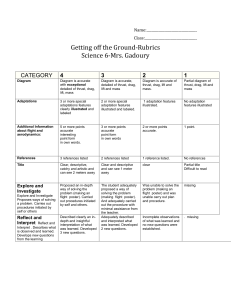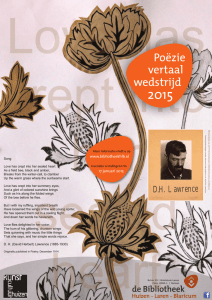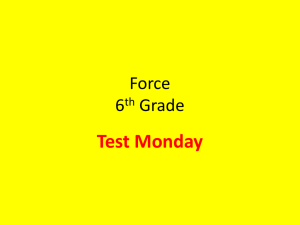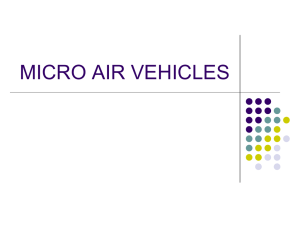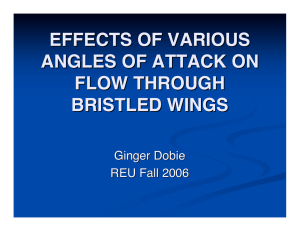File
advertisement
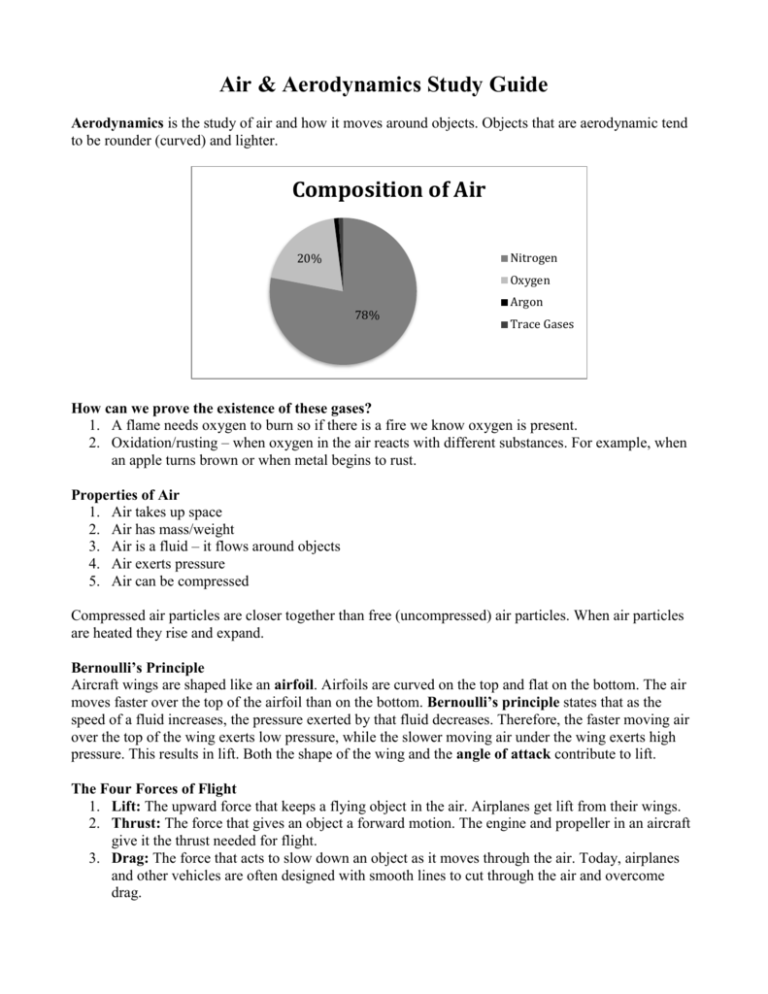
Air & Aerodynamics Study Guide Aerodynamics is the study of air and how it moves around objects. Objects that are aerodynamic tend to be rounder (curved) and lighter. Composition of Air Nitrogen 20% Oxygen 78% Argon Trace Gases How can we prove the existence of these gases? 1. A flame needs oxygen to burn so if there is a fire we know oxygen is present. 2. Oxidation/rusting – when oxygen in the air reacts with different substances. For example, when an apple turns brown or when metal begins to rust. Properties of Air 1. Air takes up space 2. Air has mass/weight 3. Air is a fluid – it flows around objects 4. Air exerts pressure 5. Air can be compressed Compressed air particles are closer together than free (uncompressed) air particles. When air particles are heated they rise and expand. Bernoulli’s Principle Aircraft wings are shaped like an airfoil. Airfoils are curved on the top and flat on the bottom. The air moves faster over the top of the airfoil than on the bottom. Bernoulli’s principle states that as the speed of a fluid increases, the pressure exerted by that fluid decreases. Therefore, the faster moving air over the top of the wing exerts low pressure, while the slower moving air under the wing exerts high pressure. This results in lift. Both the shape of the wing and the angle of attack contribute to lift. The Four Forces of Flight 1. Lift: The upward force that keeps a flying object in the air. Airplanes get lift from their wings. 2. Thrust: The force that gives an object a forward motion. The engine and propeller in an aircraft give it the thrust needed for flight. 3. Drag: The force that acts to slow down an object as it moves through the air. Today, airplanes and other vehicles are often designed with smooth lines to cut through the air and overcome drag. 4. Gravity/weight: The force that pulls objects down towards the ground. The more mass an object has, the greater the gravitational pull on the object. In a flying airplane… If lift becomes greater than gravity, the plane ascends (goes up) If thrust becomes greater than the drag, the plan accelerates (goes faster) If lift and gravity become equal, and thrust and drag become equal, the plane would hover – maintain the same speed and altitude (height) If thrust becomes less than drag, the plane would decelerate (slow down) If lift becomes less than gravity, the plane descends (goes down) Propulsion Thrust is the act of an object moving forward, and propulsion is what gives the object force to move forward. Propulsion for flying animals is generated by the flapping of their wings, running before taking off, and jumping in the air. Propulsion for aircraft is generated by either propellers or a jet engine. A jet engine works on the principle of forward thrust generated by hot gases. Streamlining Many aircrafts and birds have a streamlined/aerodynamic shape that provides little resistance to the flow of air. Streamlining decreases drag. Birds and Insect Adaptations for Flight Birds Have hollow bones that make them lightweight but strong Wings are covered in tightly fitting feathers that trap the air Feathers are made of a tough material called keratin which makes the feathers stiff but flexible and durable Have strong pectoral muscles that allow them to flap their wings Wings shaped like an airfoil – curved on top and flat underneath Aerodynamic/streamlined shape Tail is used for steering Air sacs that fill up and provide the body with a large amount of oxygen Insects Small and lightweight Specialized flight muscles Wings are much thinner and flatter than bird wings Some insects have single wings and some have double wings Wings are very thin with a network of veins. Veins make the wings very strong Insects flight muscles have to be warm before they will work. Their body temperature varies with their immediate temperature, so when it is cold outside, their body temperature is too low to fly
